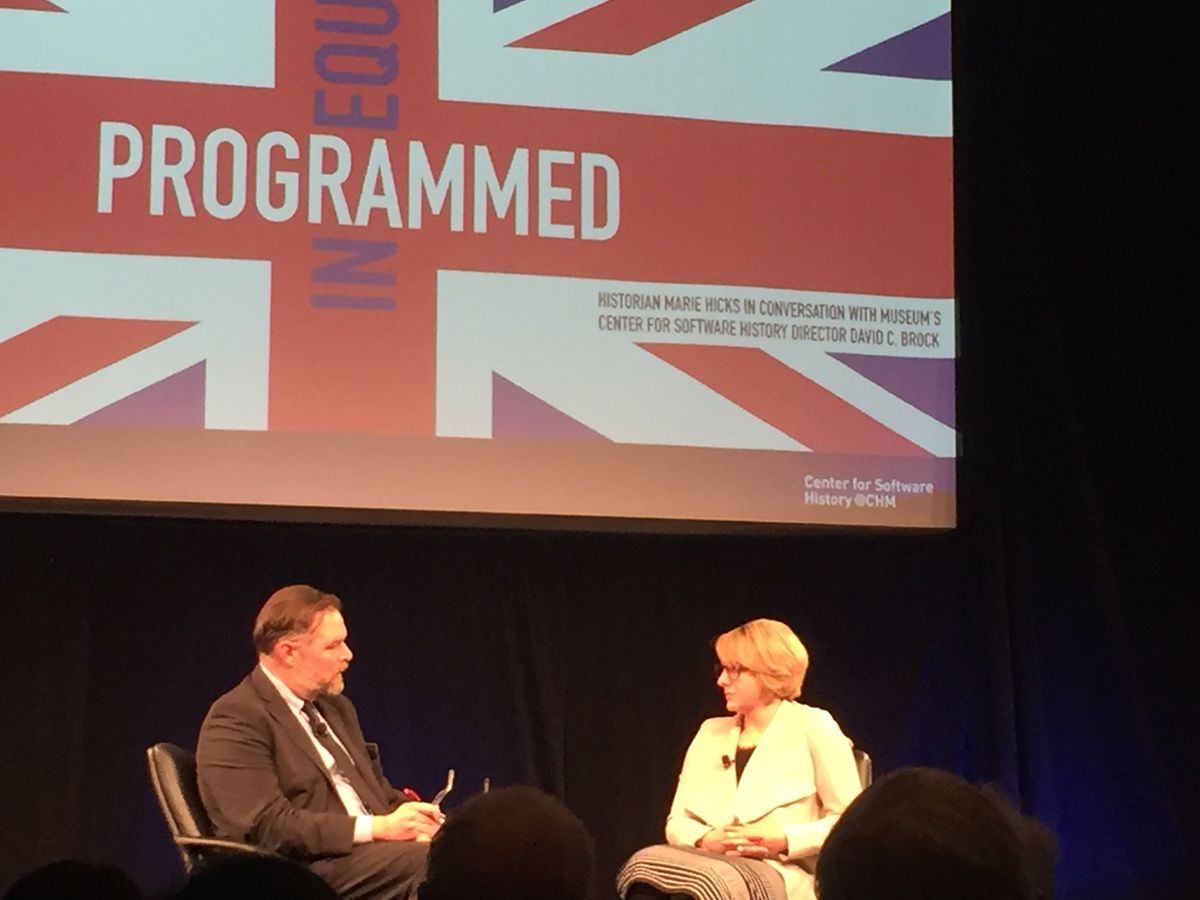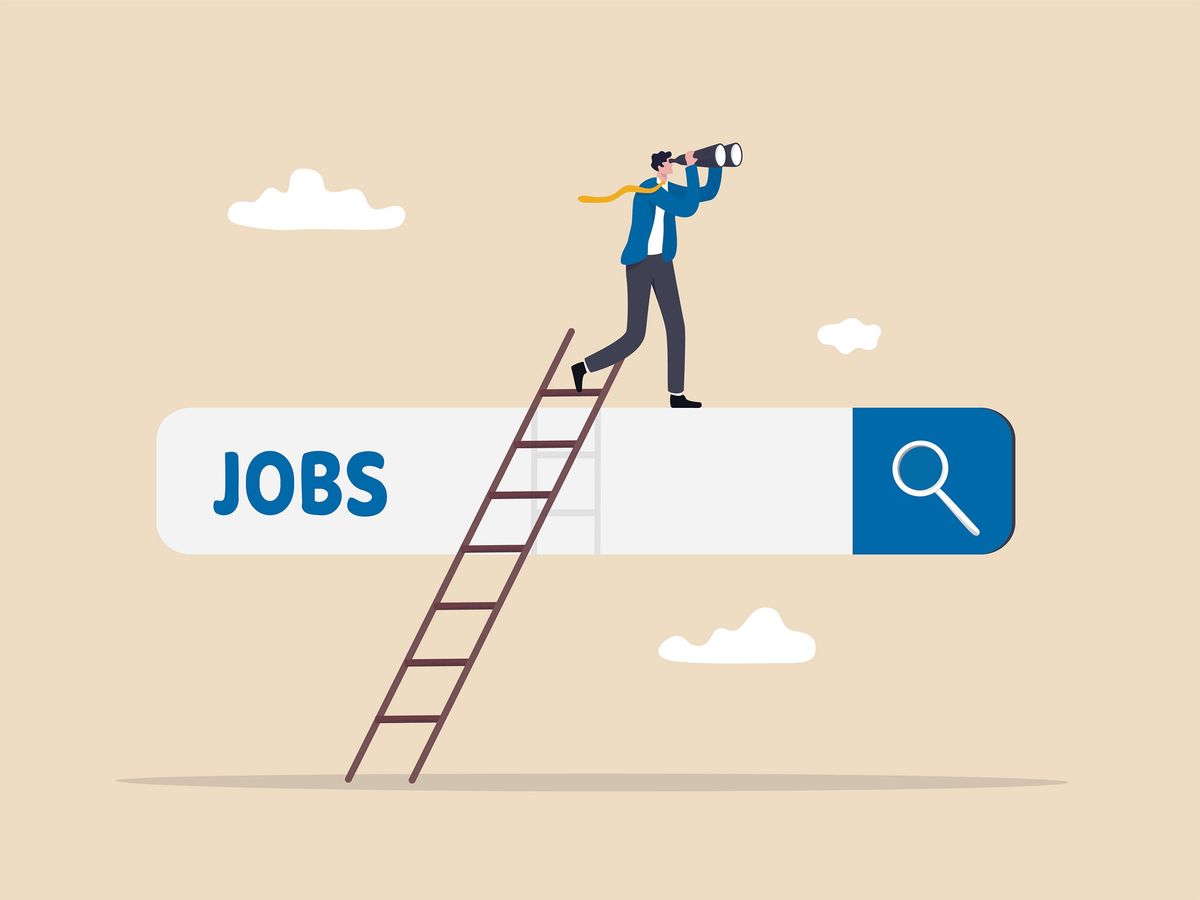Reports of sexual harassment continue to rock the tech industry and the world beyond. In a recent survey of startup founders, 78 percent of female founders said they’ve been sexually harassed or know someone else who has.
But sexual harassment is nothing new; even in the early days of computing, when women made up the vast majority of computer programmers and operators, harassment was a problem, reports historian Marie Hicks.
Hicks, author of Programmed Inequality: How Britain Discarded Women Technologists and Lost Its Edge in Computing, pointed out the tech sector’s sorry history to an audience at the Computer History Museum in Mountain View, Calif.
“Whenever women are talking about their experience, sooner or later, it comes up,” she said.
During the development of the secret Colossus computer, the world’s first programmable electronic digital computer, in the 1940s, she said, the women operating the machine worked really long shifts in a hot machine room. “A couple of the women are cooling off outside the machine room one night, and one of their fellow workers, a ‘gentleman,’ comes by and says, ‘If you want to cool off, why don’t you take off your tops.’”
In another iconic episode, Hicks reported, Dame Stephanie Shirley started her own software company after her efforts to advance in an established computer company were stymied by the men above her. Her company, Freelance Programmers, hired virtually all women, and business boomed.
“At one point, she was bidding for a government job,” Hicks says, “and a high-level British minister pinched her bottom, as she put it, in the middle of her pitch.”
It’s all a matter of power, Hicks pointed out—and women have never had their share of it. Women dominated computer programming in its early days because the field wasn’t seen as a career, just a something someone could do without a lot of training and would do for only a short period of time. Computer jobs had no room for advancement, so having women “retire” in their 20s was not seen as a bad thing. And since women, of course, could never supervise men, Hicks said, women who were good at computing ended up training the men who ended up as their managers.
But when it became clear that computers—and computer work—were important, women were suddenly pushed out of the field.
“As the gender labor flip was occurring, a whole lot of talent was being shown the door,” Hicks said. “The young men being trained to do [computing] a lot of times don’t like it and don’t stay long—and why should they? They have career prospects in other areas, why go into the nascent field?”
The British computing industry, both governmental and private sector, hemorrhaged talent, she says—and essentially lost its lead in tech because of it.
This history, Hicks says, yields lessons for today.
First of all, she said, it debunks the “fiction we have today,” which says, that “if you get the skills you need—you learn to code—you will make it through the STEM pipeline.” History shows that it just isn’t true. “It’s not about the skills, it’s about who’s doing the work. The work gets valued in different ways depending on who is doing it.” That’s why, Hicks pointed out, today software developers have a higher status and pay than people who do quality assurance and testing—jobs that require similar skills but “because of who usually does these jobs are valued differently in a way that is disproportionate to the content of the work.”
“This isn’t a STEM problem or a computing problem,” Hicks says. “It is a broad social problem.”
And the fix for it doesn’t involve a better pipeline, she says, but changing things at the top. We have an opportunity to do that now, she says, because “tech is becoming more diffuse; the higher you go, the fewer tech skills you need.
“What can be done is to get high level women in other fields to make lateral moves into tech. Though they will be few in number, they won’t be starting at the bottom; they will be coming in at a level where they will have enough influence to change something.”
Up next for historian Hicks: a prehistory of algorithmic bias. She is trying to figure out when the various forms of discrimination that exist in computers today first got baked into the technology.
The example that got her started on this research, she told the Computer History Museum audience, came up during her work on Programmed Inequality. “I found some closed files that seemed to have something to do with transgender people and the government’s main pension computer,” she says. It took her years to get access to those files—and when she did, she discovered that they contained petitions from people who wanted to correct their gender on national insurance cards. Before the system was computerized, the British government generally accommodated those requests, Hicks said. But when the computer came in, the system was “specifically designed to no longer accommodate them instead, to literally cause an error code to kick out of the processing chain any account of a ‘known transsexual.’”
Marie Hicks’s full discussion with David Brock, director of the Computer History Museum’s Center for Software History, is available here.
Tekla S. Perry is a senior editor at IEEE Spectrum. Based in Palo Alto, Calif., she's been covering the people, companies, and technology that make Silicon Valley a special place for more than 40 years. An IEEE member, she holds a bachelor's degree in journalism from Michigan State University.



